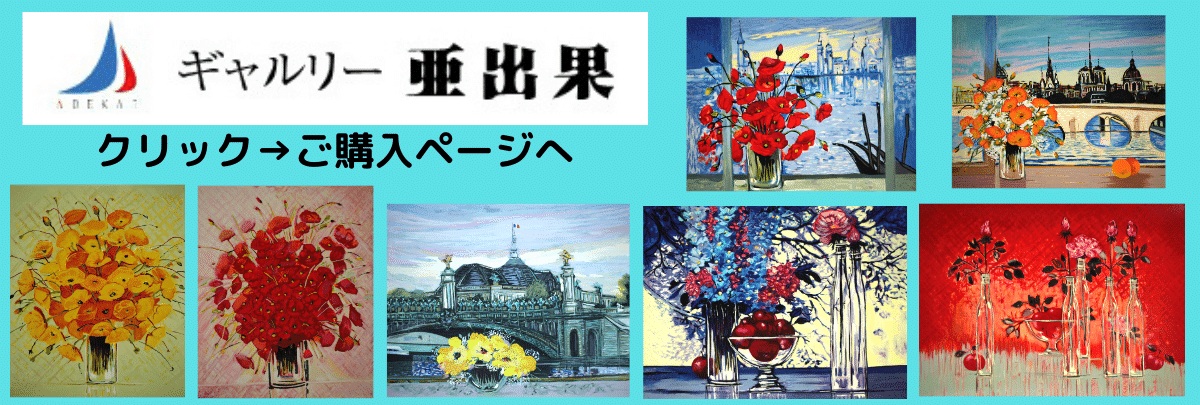This book examines from various angles the fact that Michel Henry is one of the most outstanding painters of the post-war 20th century, and explains how the value of Michel Henry's paintings is currently increasing, as well as the possibility that they will continue to increase in value in the future.
About the Japanese painting market over the 40 years from around 1980 to 2021
In the 1980s, French paintings and prints began to be actively imported and sold in Japan. The biggest reason for this was the economic development of Japan. Japan achieved a miraculous economic recovery after the war, overtaking Germany to become the world's second largest economic power after the United States, and rose to the peak of a bubble economy. In 1990, the Nikkei average stock price reached a peak of 39,000 yen, it was said that the entire United States could be purchased for the price of land in Tokyo, and Tsutsumi Yoshiaki and Mori Taikichirō were alternately ranked as the richest people in the world. This continued until the bubble economy collapsed in 1991 with the outbreak of the First Gulf War.
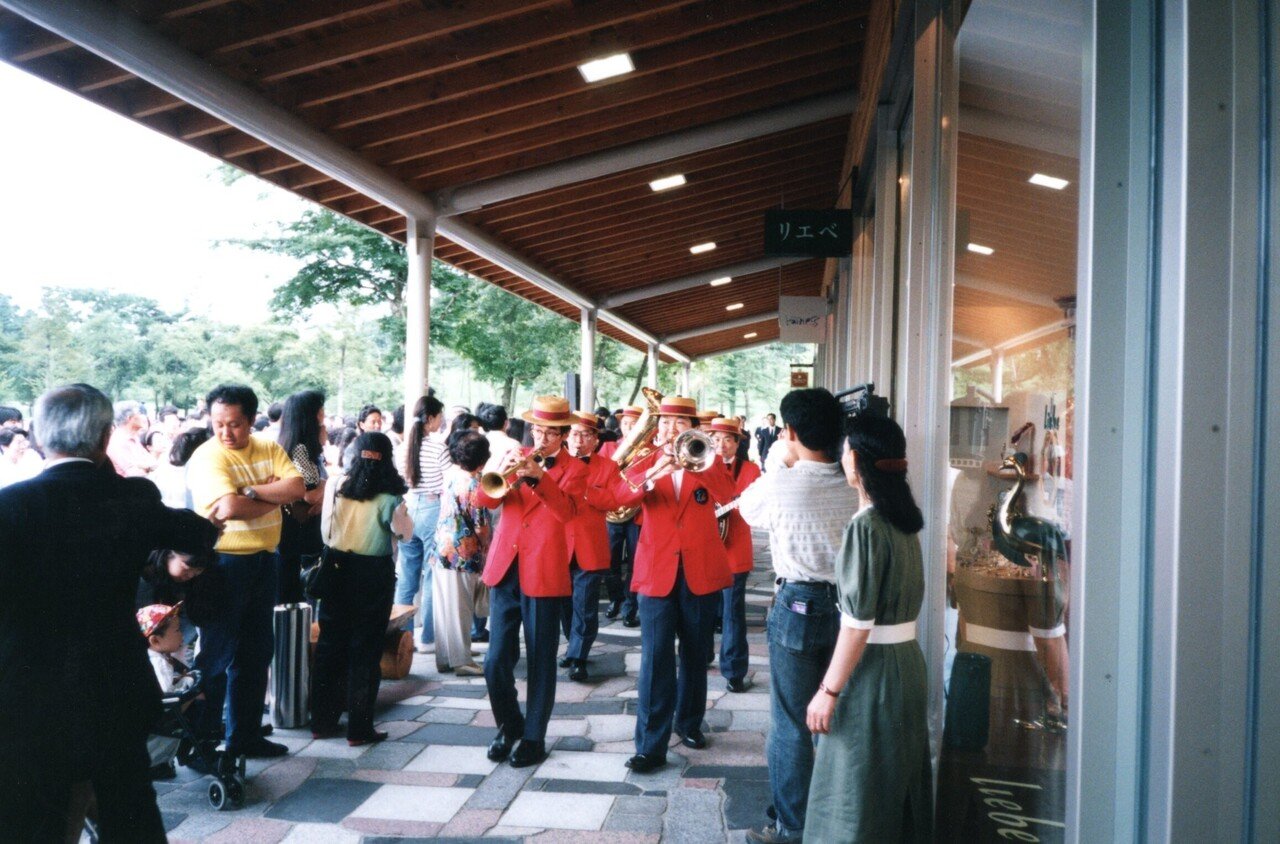
Japanese people, from large companies to small art dealers and antique dealers, went to France and bought up French art. Painters from the 19th century Impressionists and the 20th century Ecole de Paris, among others, sold for hundreds of millions or even billions of yen. The Japanese art market became a target for investment, and French art became the center of it.
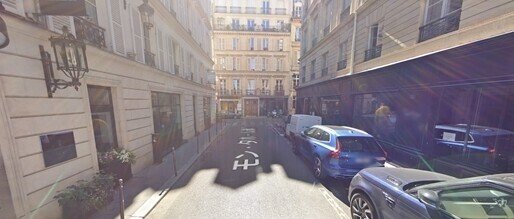
In this era, ordinary people and the wealthy bought prints of paintings. They were able to buy prints by French artists who debuted after the war, and could purchase them for hundreds of thousands of yen for prints and hundreds of millions to tens of millions of yen for oil paintings.
Bernard Cathelin's paintings
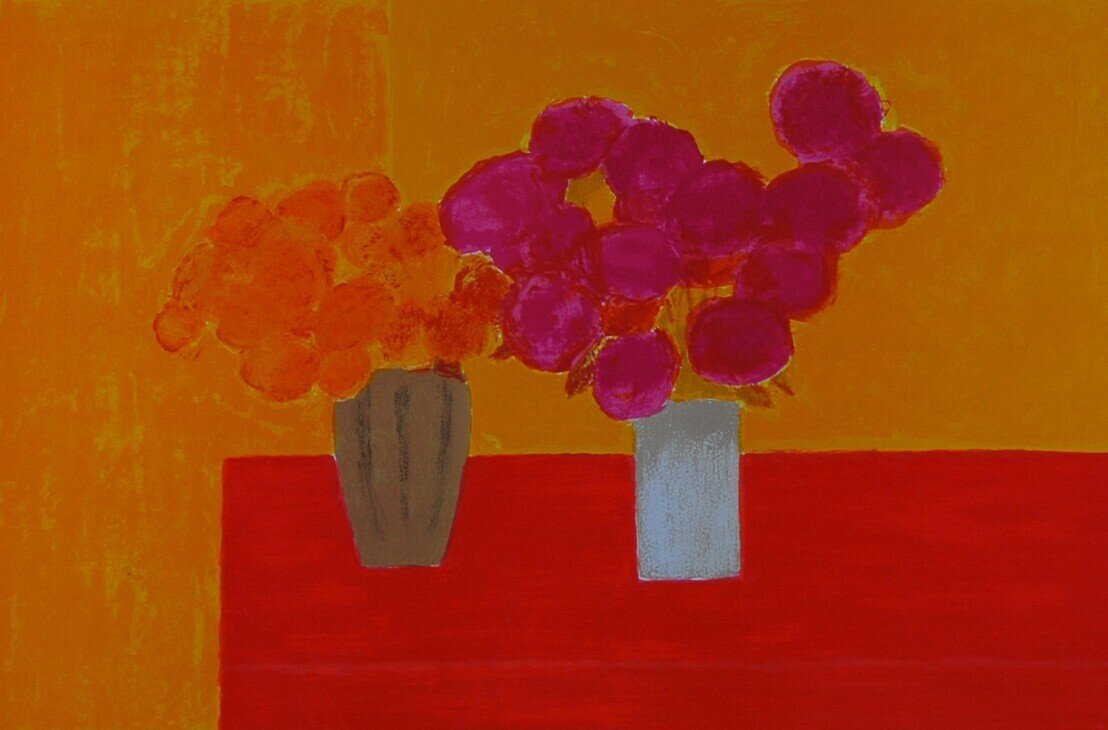
Among them, the most successful in Japan were Bernard Buffet, Andre Brasili, Bernard Cathelin, Jean Janssen and Jean-Pierre Cassignol. In addition to them, about 10 other French artists were actively sold in Japan. The prints of the Ecole de Paris artists such as Picasso, Chagall, Miro and Laurent were also sold in the general public's market because they cost hundreds of thousands to millions of yen.
Miro's prints
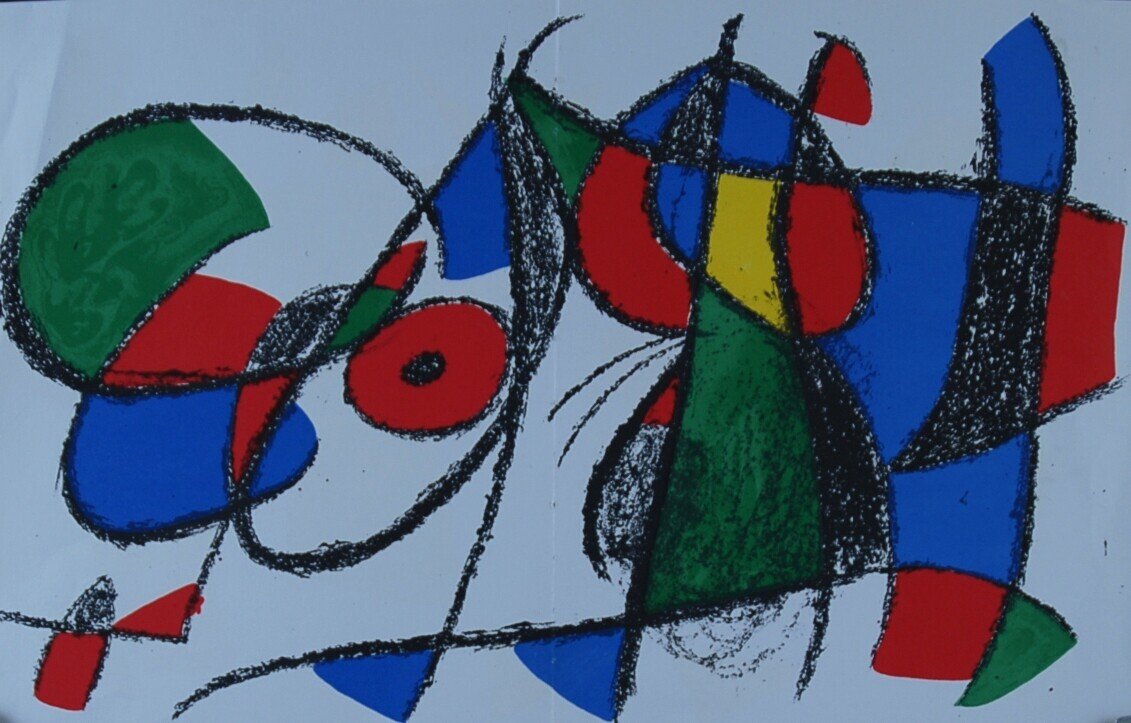
During this time, there were many Japanese people in France, and most of the Asians you would pass on the streets of Paris were Japanese. Many art dealers and antique dealers went to Paris in droves. I was one of them.
This Avenue de l'Opera is one of the main tourist streets in Paris, and since the Bank of Tokyo was nearby, there were many Japanese people walking around at the time.
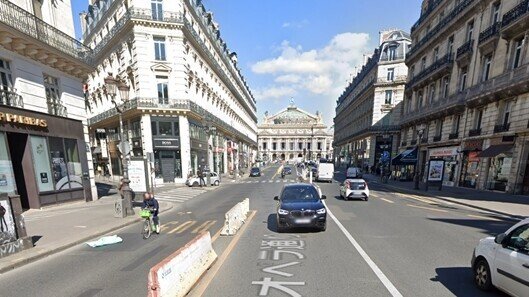
In the 1990s, after the bubble economy, American pop art, especially silkscreen prints, entered the market and sold its works using aggressive methods and at prices higher than those of popular French artists. Around 2000, their sales methods and fraudulent sales figures came to light in the media, and they became the target of criticism. They lost credibility and were no longer seen around 2000.
Around 2000, Japanese painters, mainly professors at Japanese art universities, started producing prints and occupied the market that French paintings had created. The main artists were professors at art universities and recipients of awards, such as Hirayama Ikuo, Nakajima Chinami, Higashiyama Kaii, Kataoka Tamako, Senju Hiroshi, and Kinutani Koji. They built and expanded their market, centering on department stores and galleries, and French-American pop art lost its market.
Since Tokyo Daimaru's closing-down sale in 2007, which was a huge success, sales have become the focus of the market, and works by popular artists, including French, American, and Japanese painters, have been sold at these sales. Meanwhile, the prices of these popular artists have continued to fall. As a result of this situation continuing for about 10 years, there was a shortage of art to sell on the market, sales of popular artists slowed down, and people began to look for new artists. Meanwhile, the prices of works by Japanese superstars who have built international markets, such as Yayoi Kusama and Takashi Murakami, have risen to astonishing levels.
In 2021, counterfeit prints by popular Japanese artists such as Ikuo Hirayama and Tamako Kataoka were discovered, and original prints by Japanese artists in particular lost credibility, leading to a turning point for the art market, which is centered on sales of popular artists. There is now a demand for valuable art that is free from the worry of being counterfeit. The secondary (second-hand) art market, which has become the center of sales, is now inclined to seek works of art with a clear origin and that are genuine (not counterfeit), rather than second-hand items of so-called past brands, based on past name value.
Michel Henry will continue to be valuable in the 21st century
Dahlia painting by Michel Henry
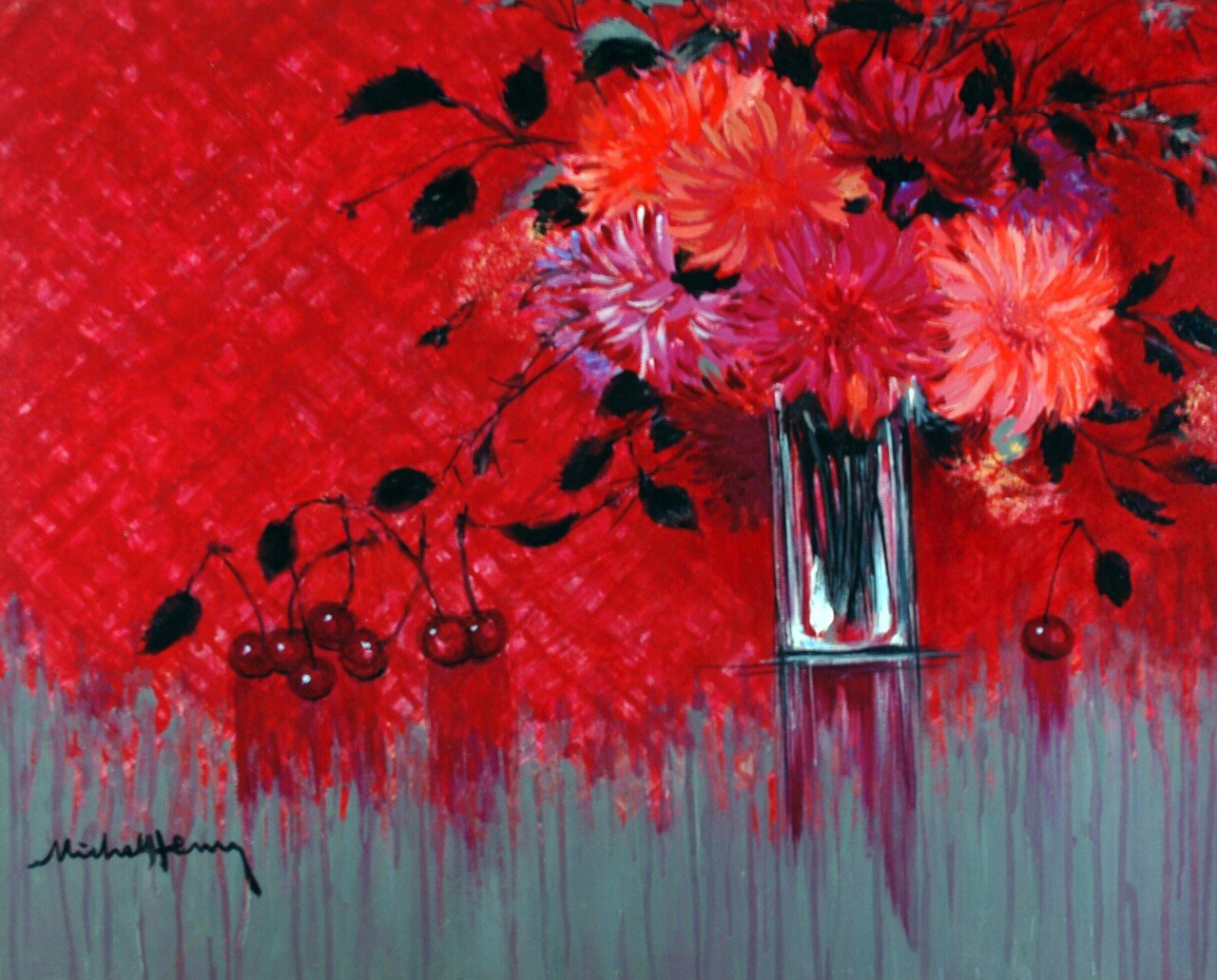
Michel Henry's high reputation in France and the United States
Michel Henry was a painter active in the same era as Buffet, Brasilier, Cathelin, and others who achieved success in Japan. He graduated from the Beaux-Arts in the same era and was one of the artists who brought glory to postwar French painting. In the 1980s, when Buffet, Brasilier, Cathelin, Janssen, and Cassigneul began to sell in Japan, Michel Henry was contracted with the American Findlay Gallery and was active in the United States and France. For that reason, he did not become as well known in Japan as them. All of the above French painters, except for Cassigneul, are artists who have received the Legion of Honor, including Michel Henry. They are one of the few artists who received the Legion of Honor between 1960 and 2000. And all of the above artists, except for Cassigneul, are contracted artists of high-end galleries on Rue Matignon, the most luxurious art gallery street in Paris, Europe.
The excellent quality of Michel Henry's paintings
There are five important elements to oil painting
1: Drawing (shape)
2: Saturation (including saturation, brightness, color value, etc.)
3: Composition
4: Material (texture of paint)
5. Artist's intent and originality
I will score each artist for each pictorial element. I will use ◎ , 〇, △, and ✖ to indicate these.
◎=3 points 〇=2 points △=1 point ✖=0 points
Bernard Buffet ↓
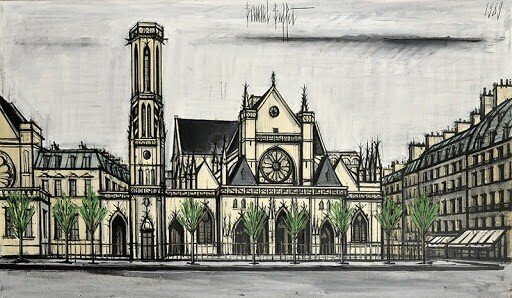
1: The appeal of drawing (shapes and lines)
2: Saturation (including saturation, brightness, color value, etc.) △
3: Composition
4: Material (paint texture) △
5. The artist's intent and originality
10 points
Andre Brasilier
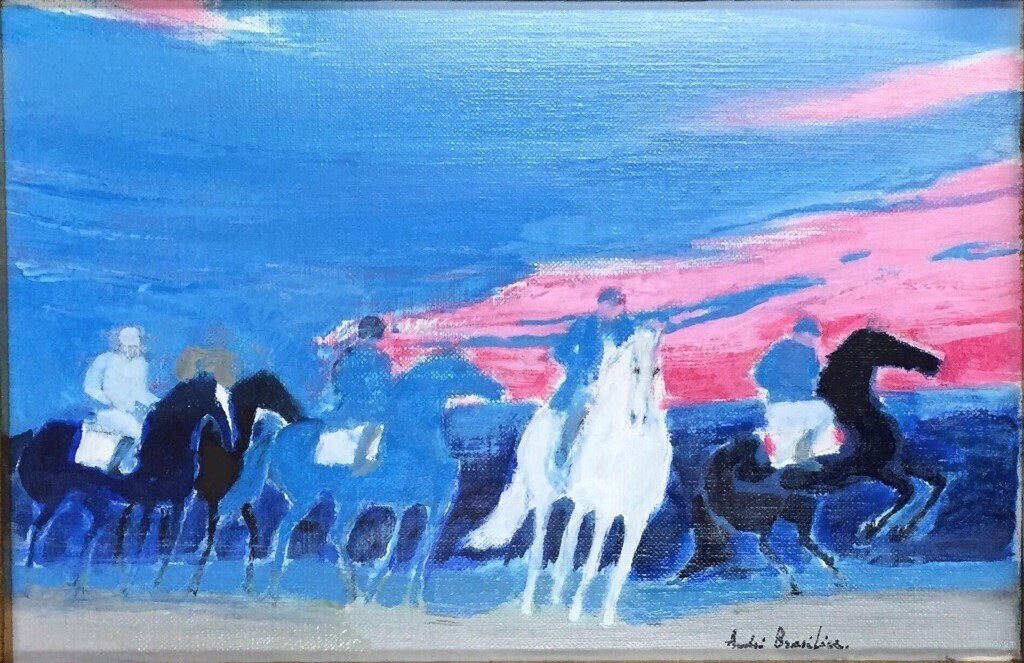
1: The appeal of drawing (shapes and lines)
2: Saturation (including saturation, brightness, color value, etc.) ○
3: Composition
4: Material (paint texture) △
5: Artist's intention and originality ○
9 points
Bernard Cathelin ↓
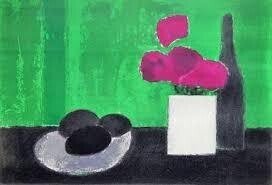
1: The appeal of drawing (shapes and lines)
2: Saturation (including saturation, brightness, color value, etc.) ○
3: Composition
4: Material (paint texture) ○
5: Artist's intention and originality ○
10 points
Jean Jansen ↓
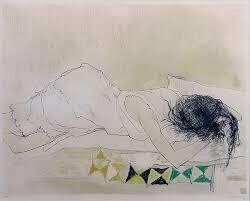
1: The appeal of drawing (shapes and lines)
2: Saturation (including saturation, brightness, color value, etc.) △
3: Composition △
4: Material (paint texture) △
5. The artist's intent and originality
9 points
Jean Pierre Cassignol ↓
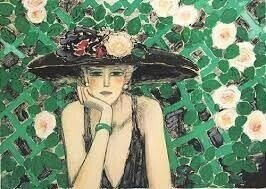
1: The appeal of drawing (shapes and lines)
2: Saturation (including saturation, brightness, color value, etc.) ○
3: Composition
4: Material (paint texture) △
5: Artist's intention and originality ○
9 points
Michel Henry ↓
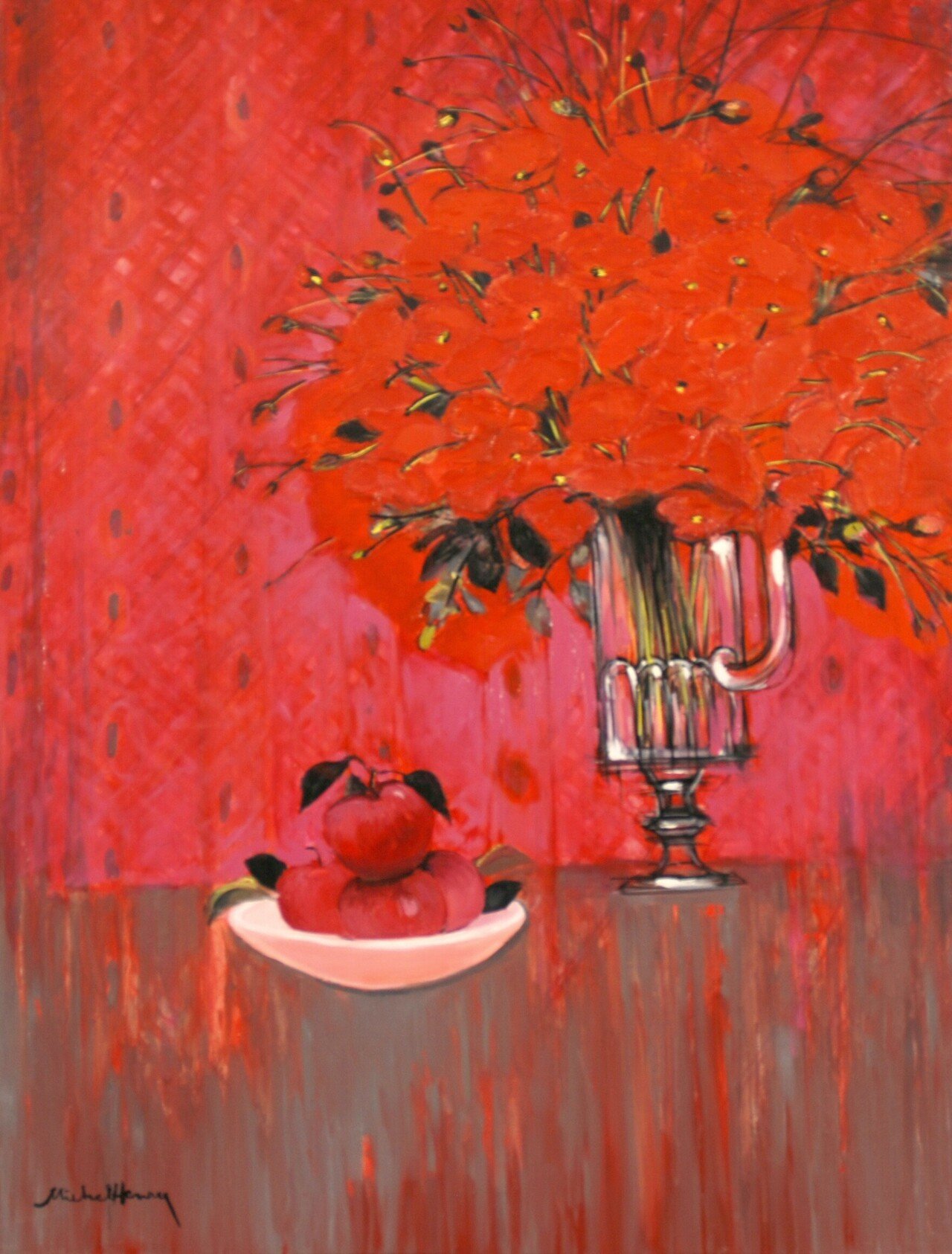
1: The appeal of drawing (shapes and lines)
2: Saturation (including saturation, brightness, color value, etc.) ◎
3: Composition
4: Material (paint texture) ◎
5. Artist's intent and originality ◎
12 points
Let me explain the above scoring.
1: In terms of drawing ability and the appeal of lines, I gave Bernard Buffet and Jean Janssen a ◎. The other artists were given an 〇. Both Buffet and Janssen were classified as Miserabilist painters, and did not use bright colors, but instead used lines to express poor life and human anxiety and sadness, so their drawings have excellent expressive power.
2: Color Buffet and Jansen's colors are not very appealing, and the lonely colors of the lines and backgrounds create a miserable atmosphere. The colors are fair. Both Cathelin and Brasilier studied under Professor Maurice Brianchon, who was skilled in using vague colors, and the influence of his professor's colors is strongly evident. The colors are appealing, so they are rated as good. Cassignol initially painted with vague, soft colors in the style of Cathelin and Brasilier, but in the 1990s he began to use strong, clear colors. Cassignol studied under Chaplain Midi, so he is a junior of Michel Henry. In the 1990s he began to use strong colors in the style of Chaplain Midi. Cassignol's colors are also rated as good. Michel Henry has a unique ability to compose colors, as his teacher, Chaplain Midi, the master of color, said, ``Michel Henry has surpassed me,'' so he is rated as excellent.
3: Composition Jansen is △, the other 5 artists are ◯. Jansen paints scenes that seem to have been cut out from the original scene, with pale colors that create a poor atmosphere of lines and backgrounds, so he does not attach importance to composition, perspective, or three-dimensionality.
4: Texture Japanese painters apply stone paint flatly, but Western painters from the 19th century onwards use tube paints to layer the colors. In this case, there are areas where the paint is raised and areas where it is applied so thinly that the canvas can be seen through. Rouault and others use paint that is as thick as 1 cm. Texture refers to how the paint adheres. Watercolor painting gives oil paintings a charm that pastels and Japanese paintings do not have. Cathelin's oil paintings have beautiful texture, so they are excellent. Michel Henry finishes by applying paint beautifully to petals and other parts, creating a breathtakingly beautiful texture. Texture is not just the charm of the brush or knife marks, but it only becomes beautiful when it resonates beautifully with other colors. In other words, to paint with beautiful texture, the colors need to be beautifully harmonized. Michel Henry is excellent. Other painters apply colors thinly to the canvas, so the paint does not rise up. The reason these artists were accepted in Japan is because Japanese paintings do not have a matière, so Japanese people who are used to seeing Japanese paintings do not feel uncomfortable with them. Their thinly painted paintings are unsatisfying to Europeans who are used to seeing oil paintings from the Impressionist period onwards. This is because they lack matière.
⑤ Artist's Intention and Originality I gave ◎ to Buffet, Janssen, and Michel Henry. Buffet and Janssen paint their thoughts and feelings about the times as if they were writing literary works. It would be good to look at their paintings as if they were looking at postwar existential writers such as Albert Camus and Sartre, or Italian realist films. Their paintings are full of that intention. I gave ◎ to Michel Henry as well. His paintings are an expression that affirms beauty and happiness, which is different from the ideas of Buffet and Janssen, who look at the miserable reality. He expresses the beauty and happiness of flowers even in the midst of a miserable reality. The other four artists are 〇. The intention of Buffet and Janssen is the ideas and thoughts they want to express, but the intentions of Cathelin, Brasilier, Cassignol, and Michel Henry are different. They want to create the beauty of the painting itself, which is woven together by the colors, composition, and material painted on the canvas. Brasilier created the charm of horses, Cassignol the charm of women, and Michel Henry and Cathelin the charm of flowers, all in their own way on canvas. The difference between Michel Henry and Cathelin is that Michel Henry gives the impression of a human thought of happiness beyond beauty. Each artist's originality and the artist's intentions can be clearly felt. This is the mark of a first-class artist.
The overall scores are: Michel Henry = 12 points, Buffet and Cathelin = 10 points, Janssen, Brasilier and Cassignol = 9 points.
I see hope for the 21st century in the world of Michel Henry's paintings
All six of the above artists, representative of the postwar period in 20th century France, except for Cassignol, were recipients of the Legion of Honor and had contracts with galleries on Rue Matignon, the most famous high-end art gallery district in Europe. Cassignol was only popular in Japan, and in France he gained fame due to his popularity with Japanese people. Michel Henry was popular in France and the United States, but in the 1980s, he was not as well known in Japan as the other artists, because a gallery run by a Frenchman called Ertel Trading sold heavy oil paintings mainly at Daimaru in the Kansai region. All of the artists except Michel Henry teamed up with Vision Nouvelle, a printmaking and sales company with its headquarters in Paris and branches in Tokyo and Osaka, to produce large quantities of original prints (lithographs), which were then sold by Vision Nouvelle's sales company in various places, raising their fame.
Michel Henry <Summer in Cassis> Original Silkscreen
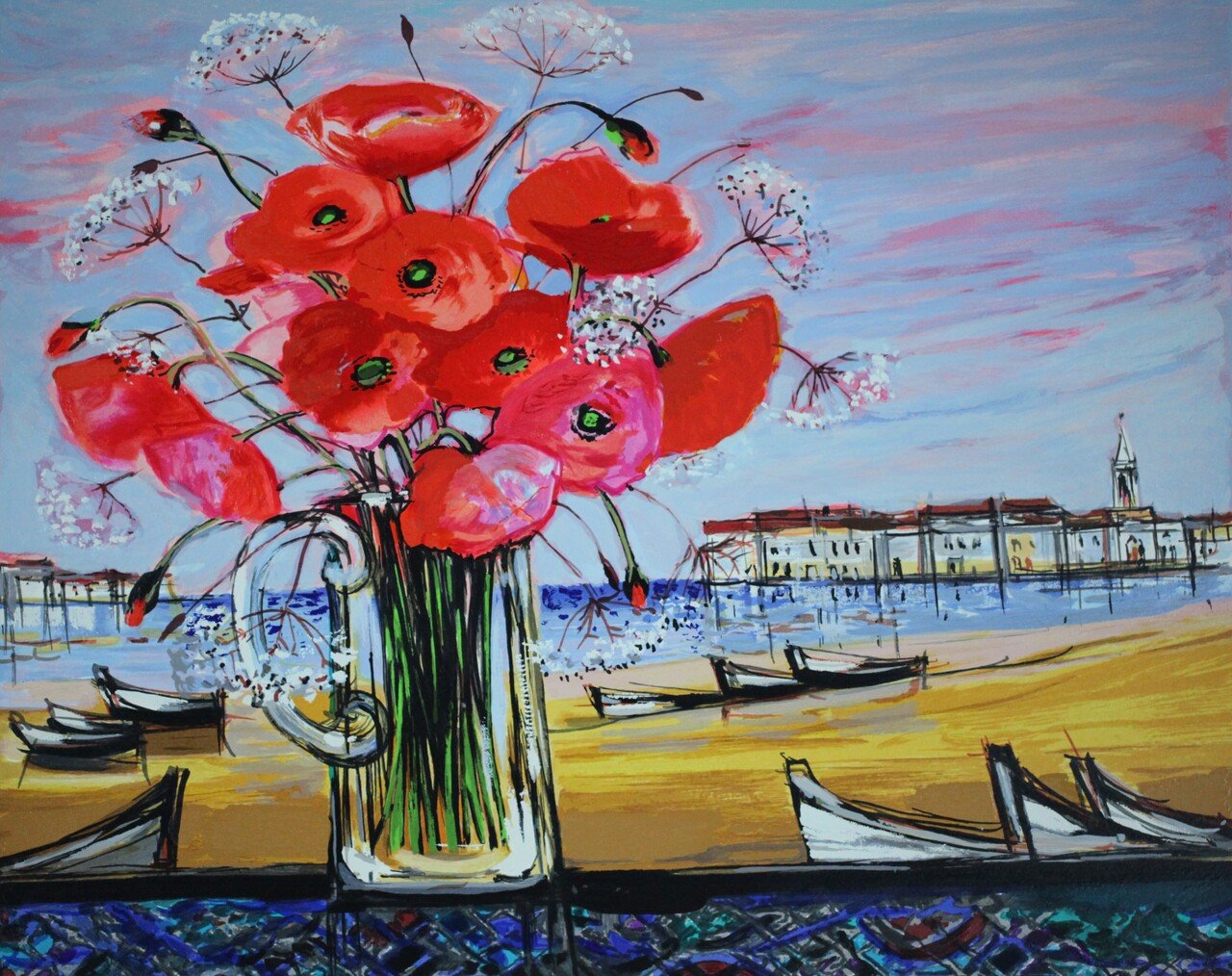
When Findlay Gallery, the US gallery with which Michel Henry was contracted, closed its Paris branch, Michel Henry made a contract with Etienne Sacy Gallery, also located on Rue Matignon. We met in 1993, and in 1995, two years later, he signed an exclusive contract with our company (Galerie Adeka) for Japan, and every year from 1995 to 2009, I attended his solo exhibitions at department stores such as Mitsukoshi, Daimaru, Isetan, Tokyu, and Tobu. He visited the US for 20 years, and came to Japan for 15 years.
Michel Henry <Five Roses> Original silk screen print↓
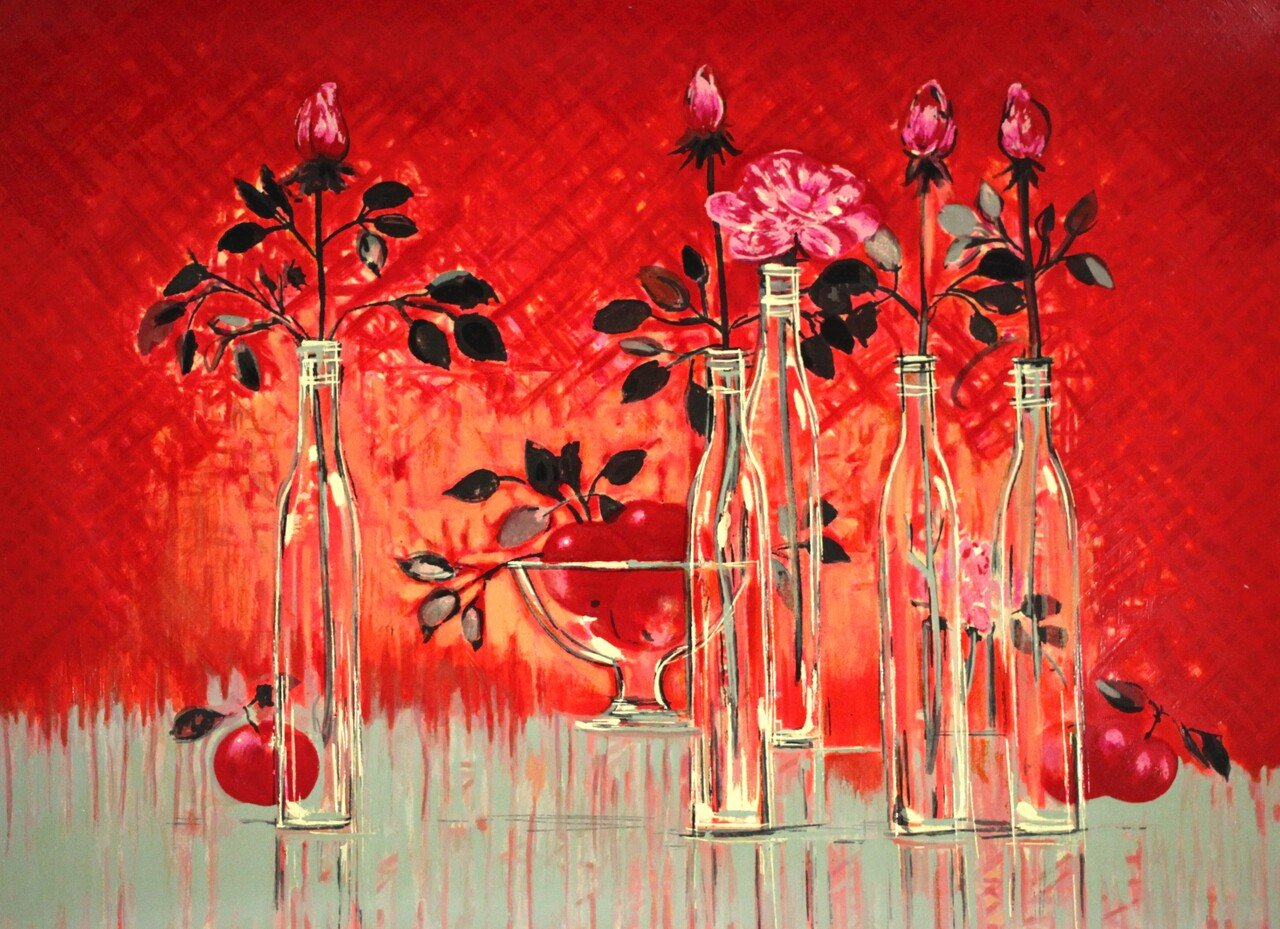
Prints by Buffet, Brasilier, Cathelin, Janssen, and Cassignol, which were quite expensive around 1990, have been declining in value for the past 30 years, and especially due to sales in the 2010s, they are no longer able to maintain their value as brand artists. Bernard Buffet has maintained its value because Maurice Garnier, a gallery specializing in buffets, continues to operate mainly at Buffet on the current Rue Matignon in Paris, but other artists are beginning to be forgotten. Oil paintings still command a certain amount of value in the secondary market, but prints (secondhand) are no longer priced as popular artists and are now priced by the pile.
Michel Henry <Blue Window> Original silk screen print↓
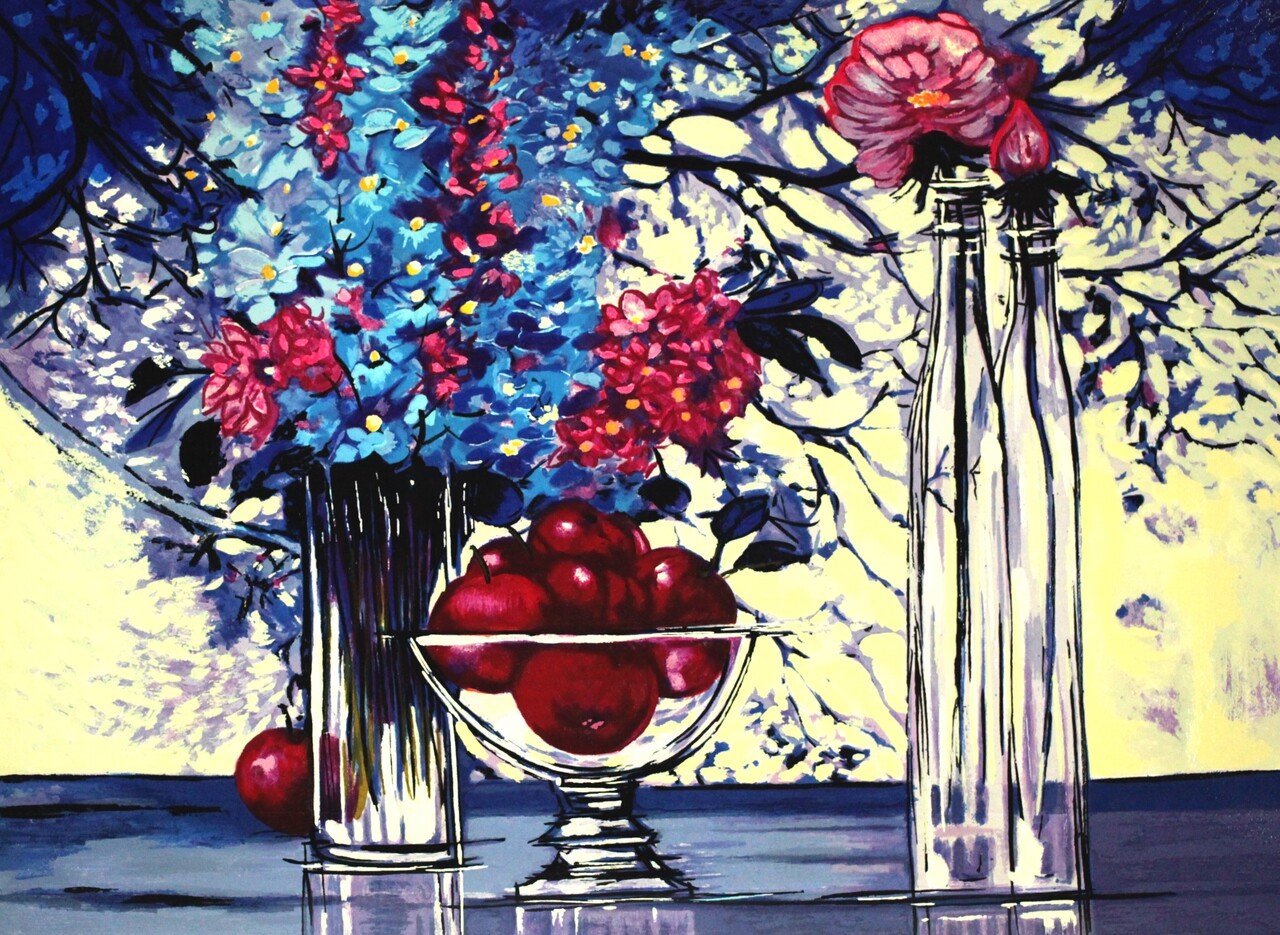
It is not known whether any of the six most representative post-war French painters of the 20th century - Michel Henry, Bernard Buffet, André Brasilier, Bernard Cathelin, Jean Janssens, and Jean-Pierre Cassigneulle - will leave their mark on history hundreds of years from now, but the power emanating from the highly original works of Michel Henry, Bernard Buffet, and Jean Janssens seems to be able to transcend time and space.
Michel Henry <Pont Neuf and Notre Dame> Original silk screen ↓
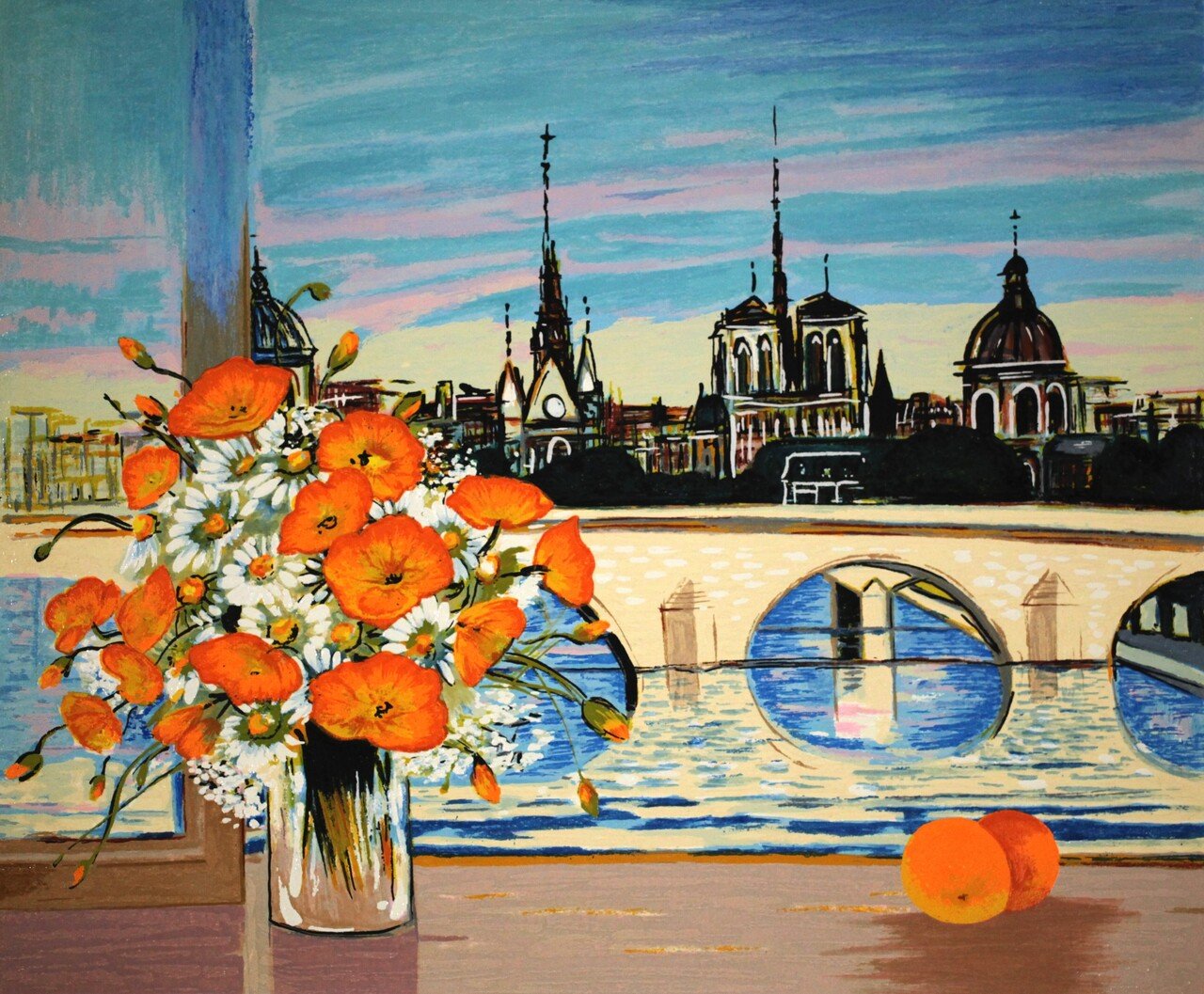
We sell primary (new) prints that we have purchased from publishers or that we have created in collaboration with Michel Henry, and in some cases we sell primary (new) works that we have purchased directly from Michel Henry. The prices of Michel Henry's works have remained stable, while the prices of his oil paintings have increased.
I (Galerie Adeka, Yasuhiro Takeda) have been selling art for 35 years since 1986. I mainly import French art (works by 20th and 21st century artists) to Japan and sell them here.
Michel Henry's visit to Galerie Adeka (then Gallery Adeka) in the French Chamber of Commerce and Industry Exhibition Hall in Sunshine City, Ikebukuro
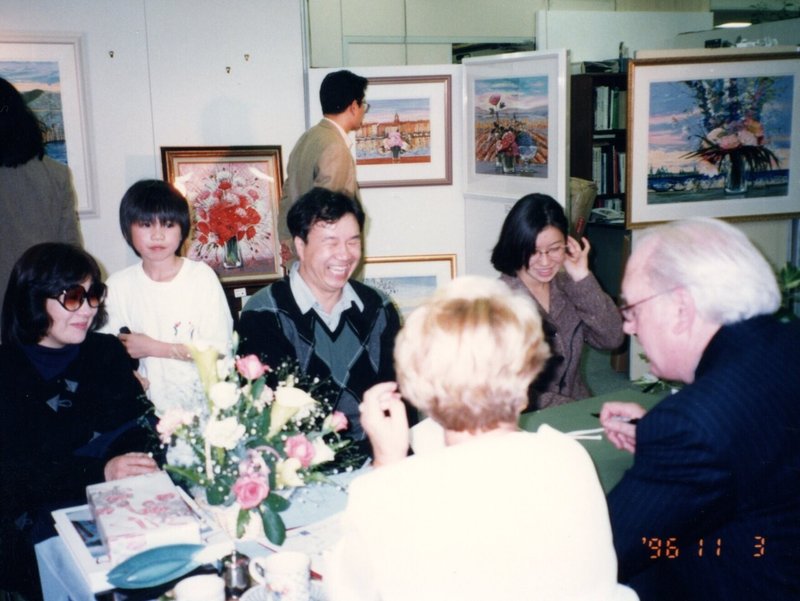
During the period when the company focused on retail, it held exhibitions at galleries and event venues in famous department stores such as Mitsukoshi, Daimaru, Isetan, Tobu, and Tokyu, as well as operating direct sales galleries in the Karuizawa Prince Hotel, Takanawa Prince Hotel, and the French Chamber of Commerce and Industry Exhibition Hall at Sunshine.
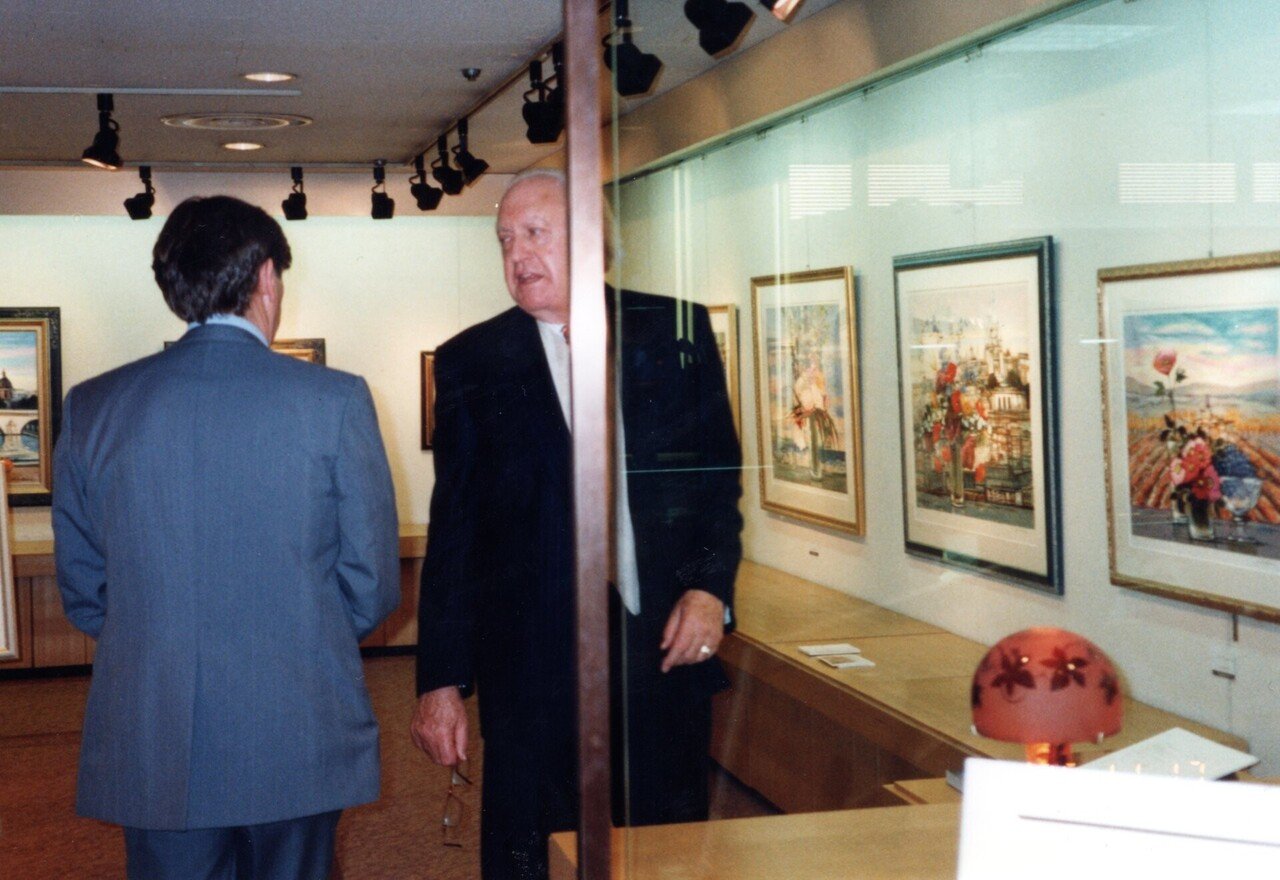
The painting industry has shrunk, especially the number of companies importing paintings from Europe. By 2015, there were no companies specializing in importing French paintings. In response to requests from galleries, department stores, and mail-order companies, retail businesses were scaled down and companies were forced to meet the demands of wholesalers.
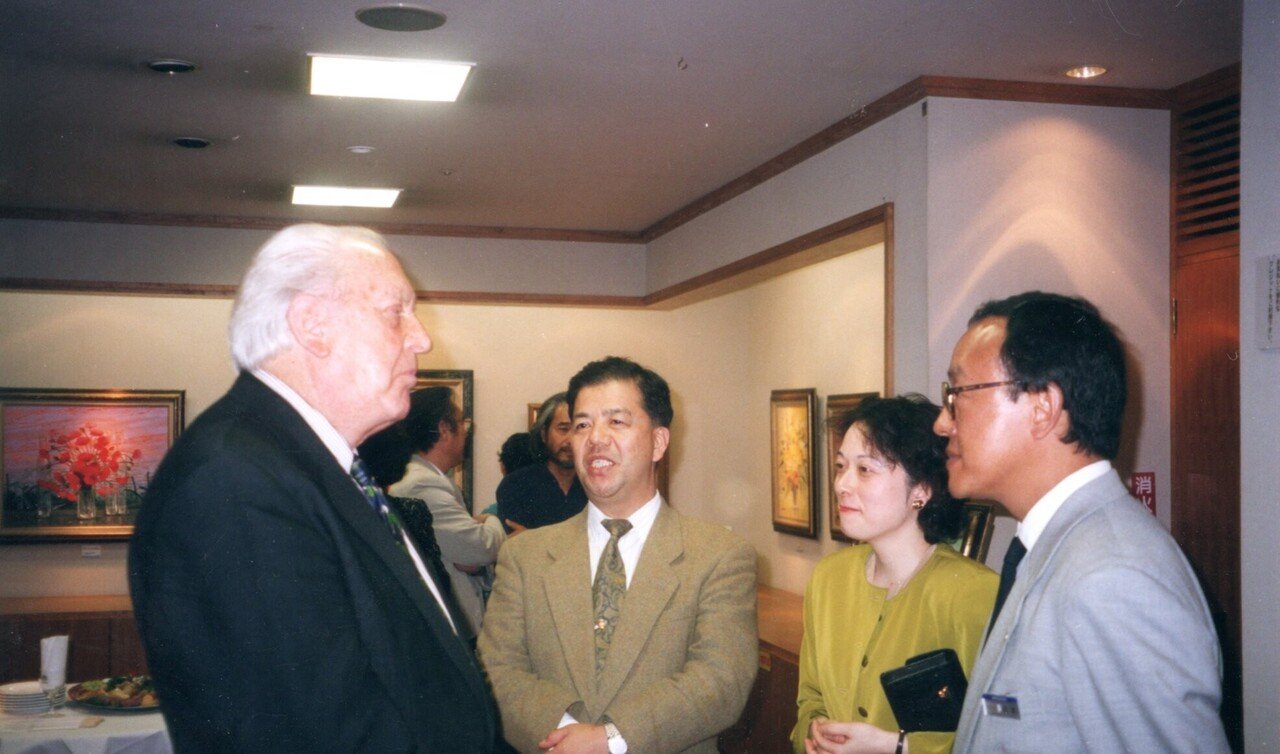
Click here for the Michel Henry print trial rental page ↓


